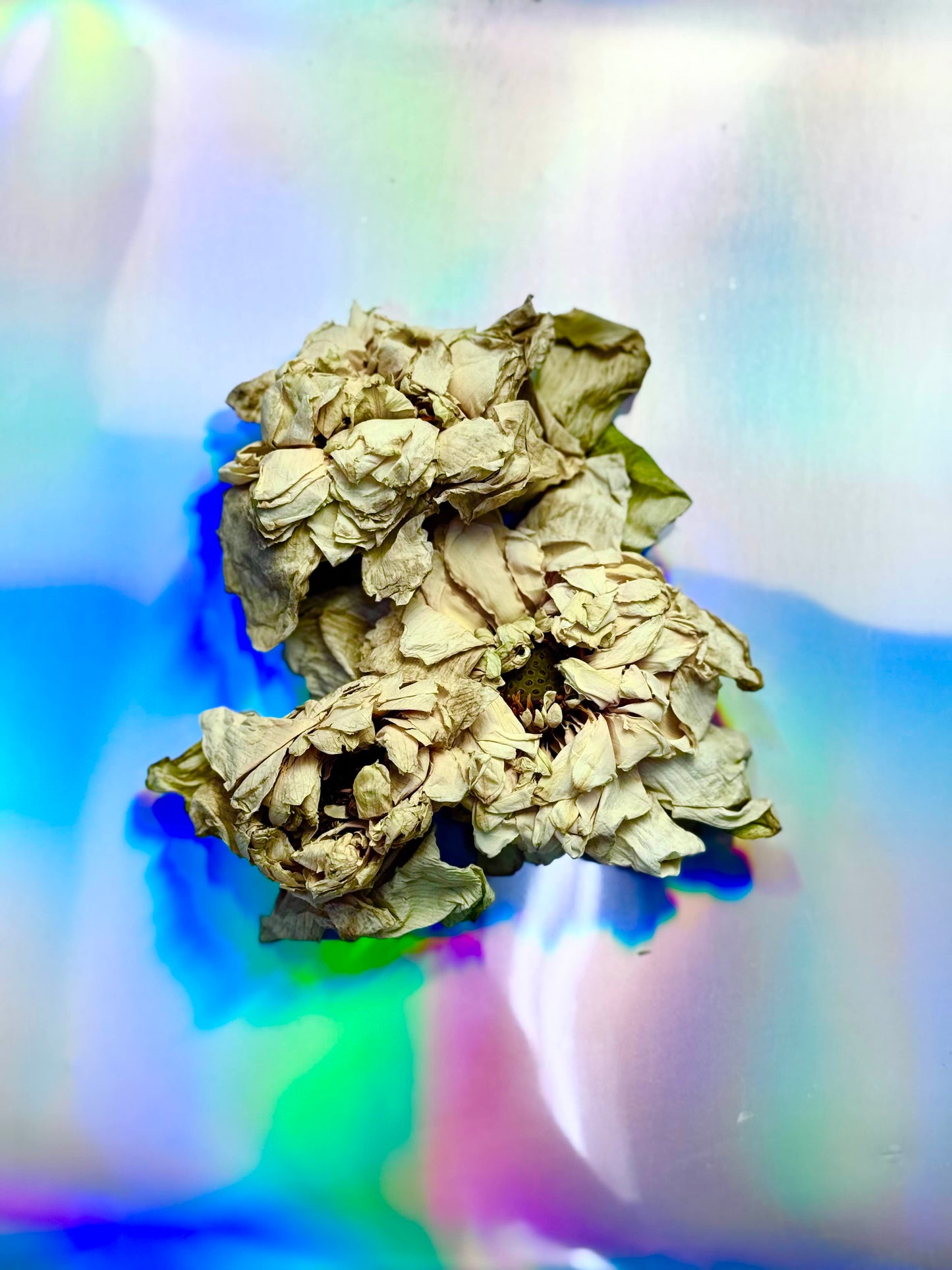
Healing Herbals
White Nelumbo Lotus Flower
White Nelumbo Lotus Flower
Couldn't load pickup availability
White Nelumbo Lotus Flower Calming and Sacred Botanical
Product Description and Potency:
White Nelumbo Lotus Flower (Nelumbo nucifera), also known as Sacred White Lotus, is offered here as a premium loose-leaf botanical. Naturally dried petals provide a gentle floral aroma and delicate taste. Perfect for steeping as tea, blending into herbal infusions, or incorporating into ceremonial and mindful practices.
History and Traditional Use:
The White Lotus has held cultural importance for centuries, particularly within ancient Egyptian, Buddhist, and Hindu traditions, where it symbolized purity, renewal, and spiritual clarity.
Usage and Directions:
-
Tea: Steep 1–2 teaspoons in hot water (190–200°F) for 5–7 minutes.
-
Blending: Mix with complementary herbs such as chamomile, lavender, or rose for unique infusions.
-
Ceremonial Use: May be incorporated into personal rituals and meditative practices.
- Tip: Begin with a small amount and adjust to preference.
Ingredients: 100% White Nelumbo Lotus Flower (Nelumbo nucifera) – naturally dried petals.
FDA Disclaimer: This product has not been evaluated by the FDA. It is not intended to diagnose, treat, cure, or prevent any disease. Consult a healthcare professional before use.
Share


Here at Healing Herbals Store
We carefully select suppliers who share our commitment to environmental stewardship and minimize waste through eco-conscious or reused packaging whenever possible. We prioritize supporting fair labor practices and are currently investing in regenerative farming methods, so every product reflects our dedication to both quality and the health of our planet. Shop now!

